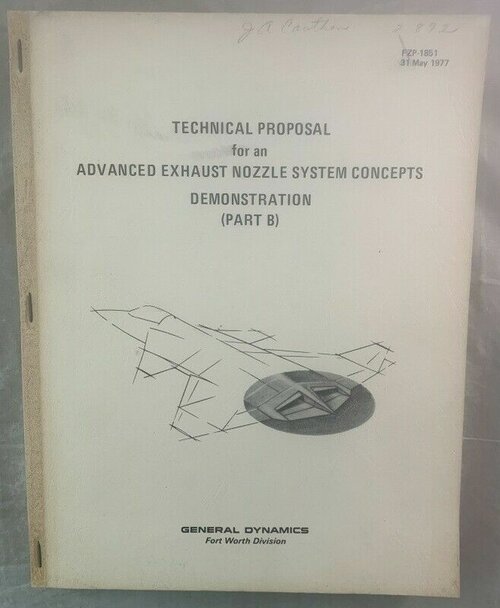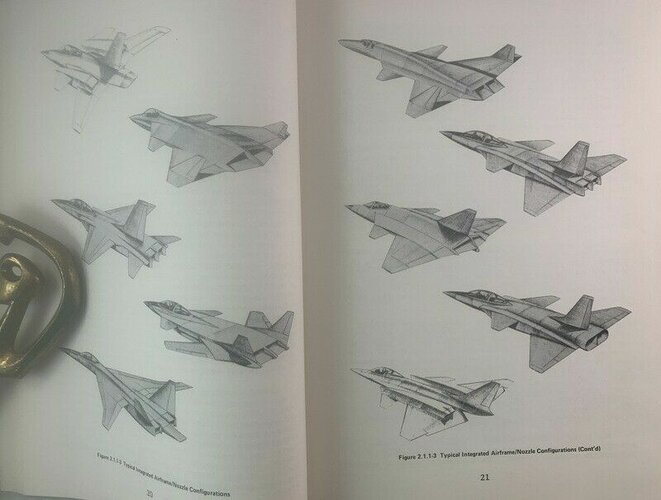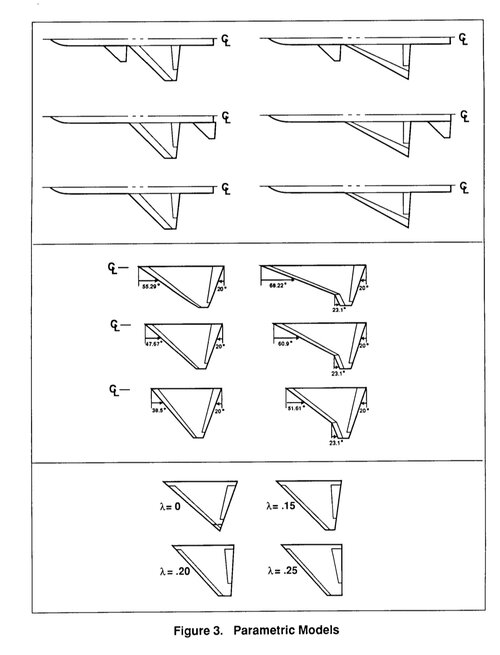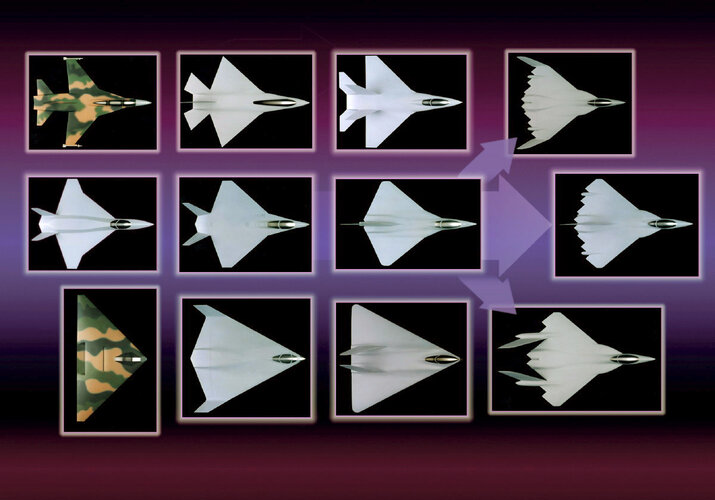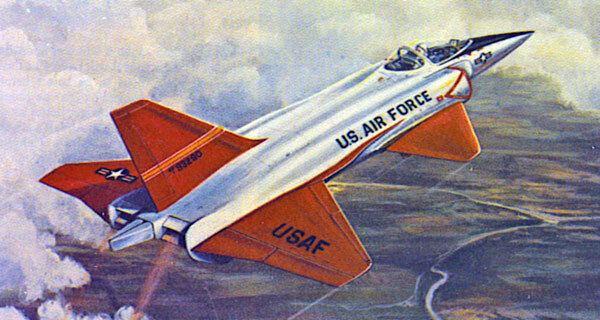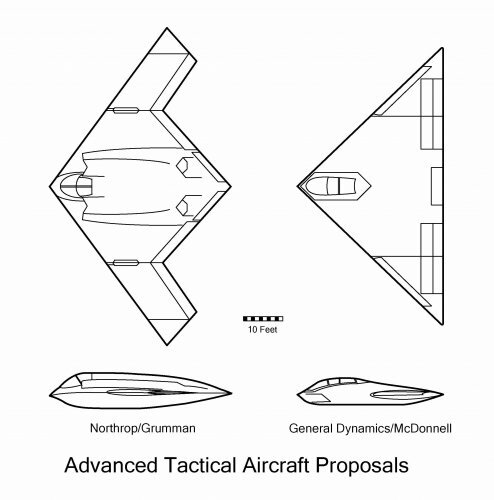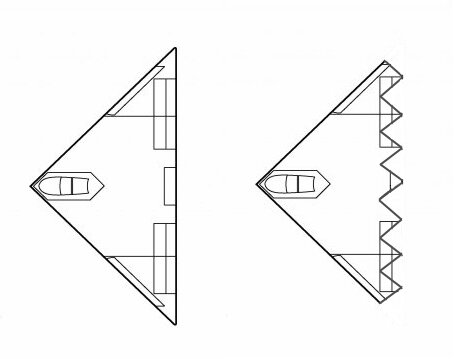Right, the F-22 wing planform and aspect ratio aligns pretty well with a delta wing, I was simply highlighting the similarities between the GD ATF and the F-22 after the summer 1987 “fire drill” which saw the configuration change from swept trapezoidal wings to diamond-like delta.The F-22's wing is a modified delta. A delta wing basically means it has a triangular shape in planform, it's just the trailing edge is slightly swept forward on the F-22. It doesn't have anything to do with whether or not the aircraft has a horizontal tail. The MiG-21 is one of the most famous delta winged aircraft around and it had a horizontal tail. But, I understand that most people think of tailless designs when they think of delta wings.
Well not necessarily; reading the article from Code One as well as Sherm Mullin’s account, a variety of configurations were explored when the swept trapezoidal wing design became untenable due to weight. The articles didn’t explicitly state that the chosen configuration was based on GD’s proposal, only that substantial weight savings while maintaining roughly comparable aerodynamics to the trapezoidal wings was the driving factor. That said, I wouldn’t be surprised if it did use a lot of work from GD’s submission.Massively as the various materials (e.g. CodeOne magazine) make clear.
Last edited:


